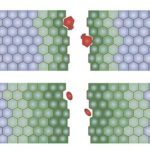Monthly Archives:July 2016
Corticosterone in chameleon claws
Steroid hormones act throughout life to regulate numerous physiological processes such as development, reproduction and immunity as well as behavioral responses, e.g. stress response and risk taking. Steroid levels vary rapidly according to varying conditions and stressors.
Is personality related to biological stress reactivity?
Is isoniazid so safe to use in tuberculosis preventive therapy?
Tuberculosis (TB) has emerged as a major warning to global public health as thirty three percent of the world population is considered to be infected with Mycobacterium tuberculosis (MTB) infection. Further, multi-drug-resistant strains of MTB in association
The declining influence of family background on educational attainment in Australia
Siblings have much more similar educational outcomes than non-related individuals do of the same age. The similarity between siblings’ outcomes compared to individuals from different families provides a measure of the total impact of family background. Family
How can we know patients are involved in treatment decision-making?
Epithelial wound healing: a matter of life and death
Throwing a wrench into the hepatitis C replication machine
Vaccine research on Africa’s cattle-killing East Coast fever: A short (somewhat potted but handsomely illustrated) history
Tremendous research progress has been made over the last ten years to better control the deadly African disease of cattle known as East Coast fever. This disease is caused by a single-celled organism, Theileria parva, which is carried
Influence of DAOA and RGS4 genes on the risk for psychotic disorders
Regular physical activity helps with the regulation of appetite and control of food intake
Assuming defeat, thwarting the feat: Defeatist beliefs, negative symptoms, and everyday functioning in people with schizophrenia
Imagine wanting to invite a friend for coffee. You might be thinking about what coffee shop to go to or what outfit to wear. But what if instead of planning the details of the coffee date you
ARTS (Aspiration-Retriever Technique for Stroke): A novel method for stroke treatment
Long learning curve for surgeons operating on esophageal cancer
Esophageal cancer is the eighth most frequently diagnosed cancer worldwide and the sixth most common cause of cancer-related death. The curatively intended treatment usually includes extensive surgery with removal of most of the esophagus (food-pipe) and the
Astrocytes, friend or foe in the brain
The experts’ perspectives on domains, definitions and measurements of health literacy in chronic disease management
Health literacy is defined as a person’s skills to navigate and access health information and understand and interpret the information to make informed decisions about their health. Understanding what health literacy is and the impact it has
Evaluating the effectiveness of marine debris policies at a local level
Do individuals with hearing loss change their driving habits over time?
Driving helps us carry out our everyday activities, stay socially connected, and maintain our independence and well-being as we age. However, age-related cognitive and sensory changes may negatively impact an individual’s ability to drive. The best predictor

















